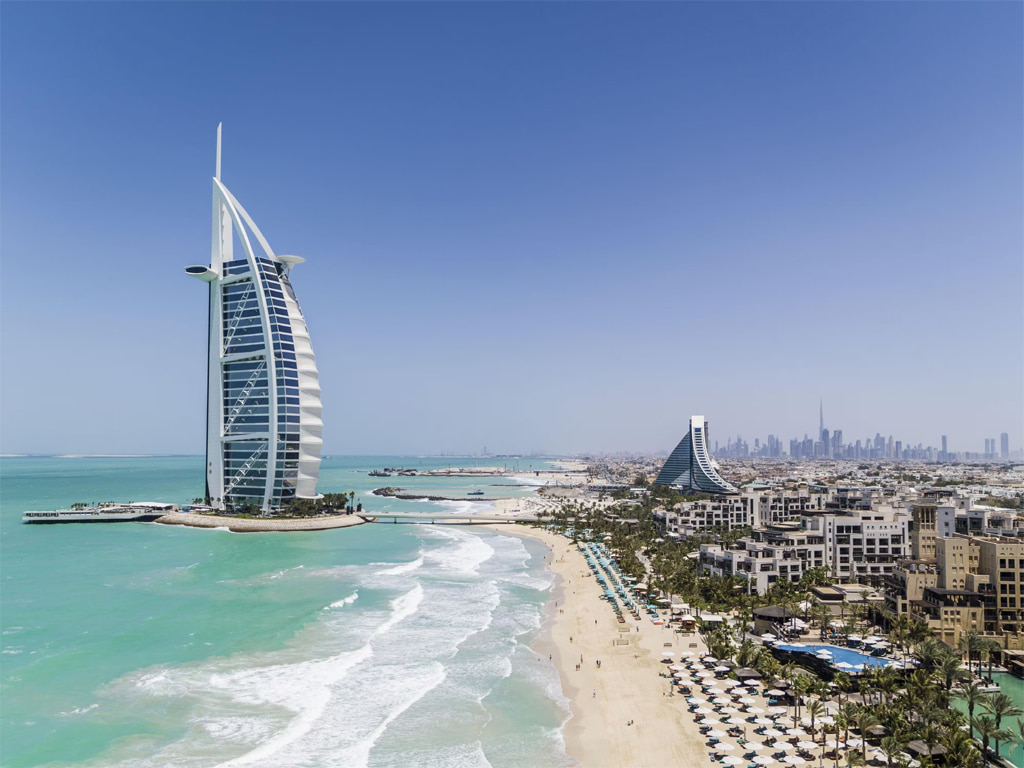Knight Frank is anticipating an active market for hotel deals in the UAE as the Emirates continue to be a magnet for hospitality capital.
In its UAE Hospitality Market Review – Autumn 2025, the
global property consultancy says an increasing range of regional and
international investors are being attracted to a maturing market characterised
by strong growth fundamentals and a deepening pool of institutional capital.
The UAE hospitality sector delivered another strong
performance in the year to August, with both revenue per available room
(RevPAR) and the average daily rate (ADR) up 11.9% year-on-year.
Abu Dhabi enjoyed the strongest growth, with RevPAR
increasing by 24% and ADR growing by 20.2% year-on-year.
Dubai, the Emirates’ largest hospitality market, posted
RevPAR growth of 10.1%, followed closely by Ras Al Khaimah with 10%.
Average occupancy across the UAE was up 4% in the year to
August, at 78.5%.
Reflecting the UAE’s status as a global luxury destination,
of the 213,928 existing hotel rooms, 26% are classified as upscale, 22% luxury
and 21% upper upscale.
The number of rooms in the UAE is expected to increase to
217,853 by end of 2025 – a 3% increase from 2024 – and to 235,674 rooms in
1,184 hotels by the end of 2030.
Future development remains weighted towards the higher end
of the market, with 43% of upcoming supply in the luxury segment.
Dubai, with 165,339 existing and upcoming keys, continues to
be the powerhouse of the UAE hospitality sector, supported by its D33 Economic
Agenda and 2040 Urban Masterplan.
The next largest markets are Abu Dhabi with 37,016 keys,
Sharjah (14,478 keys) and Ras Al Khaimah (11,902 keys). As of August 2025,
55.9% of the UAE’s upcoming supply of hotel rooms is in Dubai.
Faisal Durrani, Partner – Head of Research, MENA, said: “The
hospitality sector in the UAE is going from strength to strength, with record
tourist arrivals into cities like Dubai being a testament to the emirate’s
meteoric rise as one of the world’s most visited cities. Indeed, the government
is now forecasting 22 million tourists will have visited the city by the close
of 2025.
“Elsewhere in the sector, the UAE hotel transaction market
is entering a new phase of maturity in 2025, particularly in Dubai, where
investor focus is shifting from development-led expansion to strategic
acquisitions and asset repositioning. This evolution reflects a more
sophisticated investment landscape, shaped by years of rapid growth and a
deepening pool of institutional capital”.
Oussama El Kadiri, Partner - Head of Hospitality, Tourism
& Leisure Advisory, MENA, added: “Outside of Dubai, Abu Dhabi and Ras Al
Khaimah are emerging as complementary investment destinations, offering
leisure-driven opportunities and alternative asset classes.
“As the UAE transitions from a development-heavy cycle to a
more balanced, investment-led phase, hotel transactions are expected to remain
active. The market’s maturity, depth and resilience are positioning it as a
leading destination for hospitality capital in the region.”
DUBAI’S GLOBAL APPEAL
Dubai was the seventh most visited city in the world last
year, welcoming a record 18.2 million tourists and being named the most popular
global tourist destination by Trip Advisor for a third consecutive year.
Alongside this, Dubai International has been the world’s busiest international
airport for the past 11 years, with a record 92.3 million passengers.
The emirate’s hospitality market continues to grow, with
11.17 million international visitors arriving between January and July 2025, up
5.2% from the same period last year.
This translated into 25.53 million occupied room nights.
Some 27% of visitors came from MENA and the GCC, followed by
Western Europe (21%), Eastern Europe (15%) and South Asia (15%), underscoring
Dubai’s wide global appeal.
Average occupancy rates for the year to August increased to
79.1% from 75.9% for same period in 2024, led by luxury aparthotels and
aparthotels, which enjoyed 82% occupancy.
In terms of future supply, there are 12,861 rooms in the
pipeline – 47% of which are luxury, 21% upper upscale and 24% upscale – and
total supply is forecast to reach 165,339 rooms by 2030.
James Wrenn, Partner – Hospitality and Leisure Capital
Markets, MENA, said: “Dubai continues to dominate
regional deal activity, supported by its global tourism appeal and established
hospitality infrastructure. Recent transactions underscore the trend toward
investment over new development.”
El Kadiri concluded: “The maturing UAE hospitality market is attracting a broader range of investors – from regional family offices to international investors – seeking long-term value through operational enhancements, brand partnerships and mixed-use integrations. The rise of branded residences and lifestyle-led concepts is further diversifying the transaction landscape.” -TradeArabia News Service

